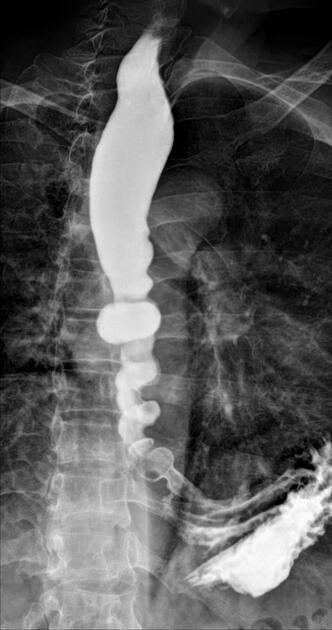Presentation
Chest pain and dysphagia.
Patient Data
Age: 55 years
Gender: Male
Download
Info

The corkscrew appearance is seen in the distal half of the esophagus due to uncoordinated peristalsis with simultaneous contraction of the esophagus in multiple points.
Additionally, a sliding hiatal hernia is present.
Case Discussion
The corkscrew appearance in the esophagus suggests diffuse esophageal spasm (DOS), a motility disorder of the esophagus that often involves the distal half. In the barium study, only 60% will be abnormal, and less than 5% will show a corkscrew sign.




 Unable to process the form. Check for errors and try again.
Unable to process the form. Check for errors and try again.